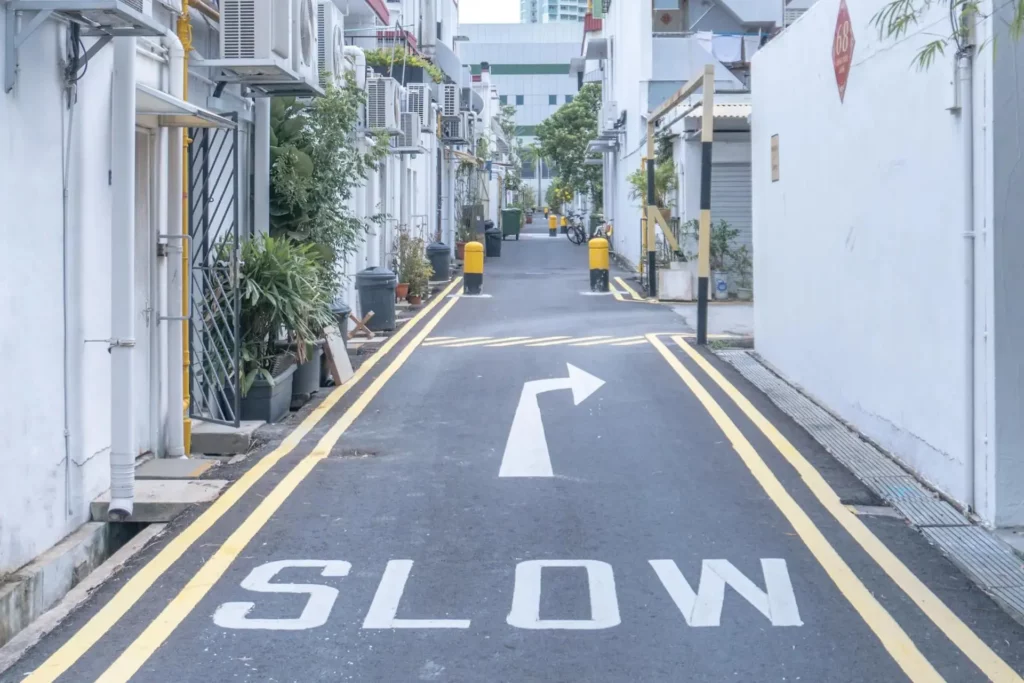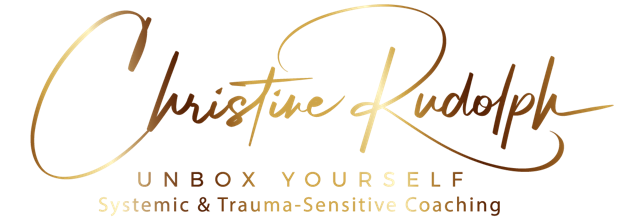Inhaltsverzeichnis
My feeling is that the art of slow coaching is to create the space in which people can quietly discover themselves and to accompany them in finding their own inner wisdom.
Christine Rudolph, Founder & CEO
Slow coaching includes what the modern and rather noisy world excludes: Being.
The path of accompaniment that does not “cry out” for higher, better, further
Quickly… Very quickly… Just once… Sentences from everyday speech. Completely “normal” – abnormal. Deeply ingrained in us: fast-fast is equated with competence, multitasking and efficiency.
Efficiency! The word that is probably a very specific description of the western-orientated (business) world and is the measure of all things, be it at university, later at work and, of course, in our private lives.
Fast-fast! The functional mode is the description of supposed performance with the claim to the ultimate:
The faster – and not least the more perfect – wins. So it’s no wonder that this is also what we expect from ourselves – at all times – or from coaching. After all, we want to see results quickly. After all, time is a rare commodity – and the work doesn’t do itself. Ultimately, it all boils down to one thing: being “ready for action” again quickly – for the next round on the hamster wheel.
I don’t want to go into the aspect of these deep-rooted patterns and beliefs in this blog article. And yet it is already becoming clear that this could ultimately be precisely the issue: often adopted, ingrained – and now not only socially encouraged, but also demanded – behaviours.
When the shoe pinches the most and there is hardly any vision left, many people book a coaching session “quickly” at best. This is all too understandable, because at this point at the latest, their own view of possible solutions is often blurred and quick results are needed.
Is that also possible?
A clever man has put it in a nutshell:
Problems can never be solved with the same mindset that created them.
Albert Einstein
So fast-fast is not fast. At least not if it is to be sustainable.
So how then?
If you can’t go left, try right or straight ahead. Or both. New paths bring solutions.

Slow coaching: the quiet accompaniment for the noisy world in the fast lane
This is where my approach of slow coaching or quiet mentoring comes into focus.
Slow coaching is based on mindfulness, non-judgemental perception and solution-orientation.
The process of calming down is usually the most difficult, as this is what creates the basis for cooperation.
In other words, the strength that this process possesses when you get involved in it is of a long-term nature: getting involved and trusting. Surrender to the process. This is exactly where we start. Slow coaching happens from a moment of arriving in the here and now. Not in circles of thoughts about yesterday or worrying about tomorrow.
Now.
The here and now always involves our senses. And “someone” who never lies: our wonderful body.
Because quiet support in slow coaching or quiet mentoring doesn’t “want” anything. But perceives.
Perceiving. Sensing what is “true”. Now. In my body. This exercise is not always easy. Especially not if you’ve been functioning all your life – and are no longer supposed to feel your body.
Crossing your own healthy boundaries on a daily basis, be it with too much work, sport, alcohol or too little sleep – overexploitation and not feeling yourself have many faces.

This is where mindfulness comes in. I know: a buzzword of the 2000s, but it is more than that: taking care of yourself is quite simple in itself and yet: we usually don’t do it. First and foremost, mindfulness means being aware of yourself and your body. Perceiving – here it is again – has to do with sensing. Again. Becoming aware: Your limits. When is it enough? When is it too much? When is too little?
The second step, which we humans usually find difficult, is to say STOP. Set boundaries. Many people don’t feel this.
Stop. When I tend to hang too much around my neck again. Chasing after the next adrenaline rush like a junkie, seeing the next business trip as a personal hunt and the “deal” I’ve made as a trophy.
Exceeding our own alarm signals is deeply ingrained in us
The constant adrenaline rush, the feeling of being on your own full-speed motorway – is also reinforced by social recognition from outside.
This is called being “on a drug”. Addiction. From the rush. No matter how it presents itself.
It is an addiction – one that is recognised by society. That’s what makes it so difficult. Because addiction can only be resolved – initially – through withdrawal. Withdrawal from intoxication. From the constant fast-fast-fast…
There are more important things in life than constantly increasing its speed.
Mahatma Gandhi
So the answer is: quiet & slow
Not in full stop, of course. That doesn’t work.
But consistently. Which in turn takes time.
Time. To slow down. You can say “yes” to that first.
Let’s talk about what exactly you need in this matter. And then I can invite you: on your personal journey – with a start of 3 hours intensive coaching or here on the island – in nature.
I am looking forward to meet you.
CSlow Coaching as a way to nervous system balancehristine


